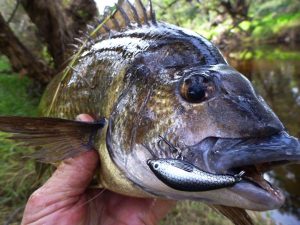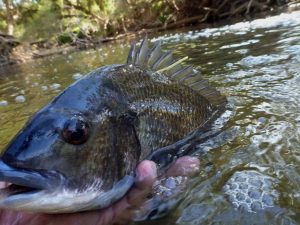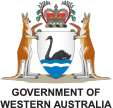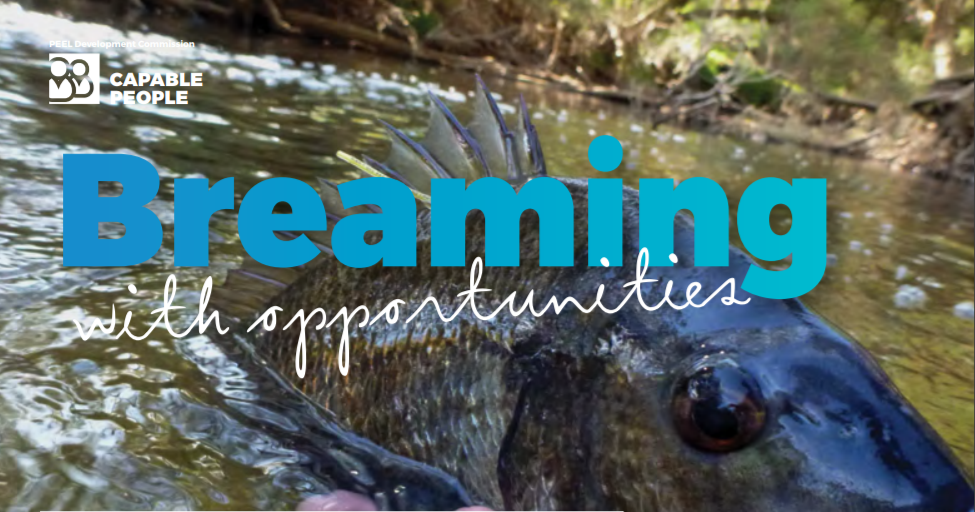The Peel-Harvey Catchment Council (PHCC) is partnering with Murdoch University and John Tonkin College in an exciting new project to start an aquaculture program to grow black bream for release into the Murray River.
Over the past month, a room at the college’s Tindale Campus has been transformed into an aquaculture laboratory. Under the supervision of teachers Barbara Sing and Kim Davies, students from John Tonkin College’s specialist “Surf Science” program have started building a food web, by growing algae which will be used as food to grow microscopic aquatic animals called rotifers, which will in turn be used as diet for black bream during their early life stages.
 In May, between 50 and 100 adult Black Bream will be collected from the Peel-Harvey Estuary by Murdoch University scientists to be used for brood stock. The brood stock will then be conditioned for three months before being induced to spawn. The John Tonkin College students will care for the resultant bream larvae and grow them on a diet of rotifers for a month or so to a length of a few millimetres before swapping their diet to brine shrimp, which they will also grow at the college. At the end of the school year, a sample of the now approximately 50 mm long bream will be checked to ensure they are disease free before release of approximately 5000 juvenile black bream into the Murray River. The process will be repeated in 2020 by retaining a core of the 2019 students but introducing a new group of students to the aquaculture program involving six classes of up to 110 students each year.
In May, between 50 and 100 adult Black Bream will be collected from the Peel-Harvey Estuary by Murdoch University scientists to be used for brood stock. The brood stock will then be conditioned for three months before being induced to spawn. The John Tonkin College students will care for the resultant bream larvae and grow them on a diet of rotifers for a month or so to a length of a few millimetres before swapping their diet to brine shrimp, which they will also grow at the college. At the end of the school year, a sample of the now approximately 50 mm long bream will be checked to ensure they are disease free before release of approximately 5000 juvenile black bream into the Murray River. The process will be repeated in 2020 by retaining a core of the 2019 students but introducing a new group of students to the aquaculture program involving six classes of up to 110 students each year.
So why is the State funding enhancing the stocks of black bream through aquaculture? Black bream are native to Western Australian estuaries including the Peel-Harvey and are a very popular species for recreational fishers. For example, anglers from around Australia tested their skills against our local black bream during the Hobie Kayak Australian Bream Fishing Championships held on the Peel-Harvey Estuary in 2017.
black bream complete their life cycle in the estuary in which they were born. Black bream born in the Peel-Harvey Estuary system, including the Murray River, are entirely dependent on the estuary to provide suitable habitat including water quality and food throughout their life cycle from birth to death.
They are therefore exposed throughout their lives to environmental threats and because their stocks are only replenished from within the estuary, events such as fish kills can decimate the stock. This project aims to enhance the stocks of black bream by protecting the fish from these threats in their early life stages through the aquaculture program.
 The aquaculture program is overseen by Drs Alan Cottingham and Ben Roennfeldt, researchers at the Centre for Sustainable Aquatic Ecosystems at Murdoch University, contracted by the PHCC to assist with the project. Dr Cottingham says that “The current stock enhancement project is playing a vital role in sustaining black bream in the Peel-Harvey Estuary, which hosts the second most important recreational black bream fishery in the state. Initiatives, such as these, are becoming increasingly important as climate change and other humaninduced impacts have deleterious effects on these systems”.
The aquaculture program is overseen by Drs Alan Cottingham and Ben Roennfeldt, researchers at the Centre for Sustainable Aquatic Ecosystems at Murdoch University, contracted by the PHCC to assist with the project. Dr Cottingham says that “The current stock enhancement project is playing a vital role in sustaining black bream in the Peel-Harvey Estuary, which hosts the second most important recreational black bream fishery in the state. Initiatives, such as these, are becoming increasingly important as climate change and other humaninduced impacts have deleterious effects on these systems”.
Research by Dr Cottingham and his colleagues at Murdoch University has shown that the recruitment, or the survival of black bream from spawning to a juvenile fish, has been unsuccessful in the Murray River in the last decade with the exception of 2010. The reasons for this poor recruitment are unclear, but possible causes include unsuitable water quality during spawning or loss of adult females capable of breeding (brood stock) from recurring fish kills over the past decade or so.
Dr Cottingham says “The implications are that adult black bream in the Murray River are more likely to have been born before 2010 than after and that fish killed in events since then are not being replaced with juveniles. A catastrophic fish kill could see the loss of the species from the Murray River for years.”
Dr Cottingham assessed the bream recruitment using a simple but clever technique to determine the age structure of the black bream stocks.
Throughout their lives, most species of finfish, including black bream, accumulate deposits of calcium carbonate called otoliths in their heads. Each year, a new layer of calcium carbonate is laid down on the outside surface of these small stone-like structures. Careful removal and examination of the otoliths under a microscope reveals these layers as a pattern of rings from which the age of the fish can be determined, similar to counting the rings in a tree trunk. The otoliths are therefore like time capsules, storing information about the life history of the fish.
Just before release into the Murray River, the aquacultured black bream will be treated with a dye that binds to the calcium carbonate of the otolith leaving an indelible purple stain.
After release into the estuary, this stain will be retained as a signature at the core of the otolith as the fish ages, identifying black bream aquacultured by the students from John Tonkin College and differentiating them from the wild stock.
PHCC’s Science Advisor Dr Steve Fisher says, “This project is funded to 2020 as part of a State Government Election ‘Recreational Fishing for the Future’ commitment, and supported by the State government’s Royalties for Regions program to improve the health of the Peel-Harvey Estuary. We hope to extend the aquaculture program beyond 2020 and to also engage with recreational fishers as citizen scientists to help us monitor the survival rate of the aquacultured bream. Fishers would provide us with the skeletons and heads of adult bream they take from the estuary, in particular the Murray River, for students and researchers to examine to establish the age of the fish and whether or not it came from the aquaculture program. Community members are distraught when fish kills occur, especially residents around the estuarine parts of the Murray River and Serpentine Rivers. Involving the community in the aquaculture and citizen science monitoring program recognises and acts on their concern.”
Peel-Harvey Catchment Council’s Chair Cr Caroline Knight adds, “One of the most exciting aspects of this project is working with John Tonkin College students who are our future scientists and leaders. Not only are they learning new skills and discipline in aquaculture, they are also getting hands on experience n the biology of black ream and the challenges the pieces face to survive in our changing environment. This project will raise their awareness of the fragility of the health of the Peel-Harvey estuary, in particular the lower reaches of the Bream are also an important part of the Peel-Harvey Estuary ecosystem. Unlike blue swimmer crabs that migrate in and out from the estuary and atchment in the long term protection f our natural environment”.
This article was first published in the Peel Magazine, Autumn/Winter – vol 5.1 – to read and download the full magazine, click here.



